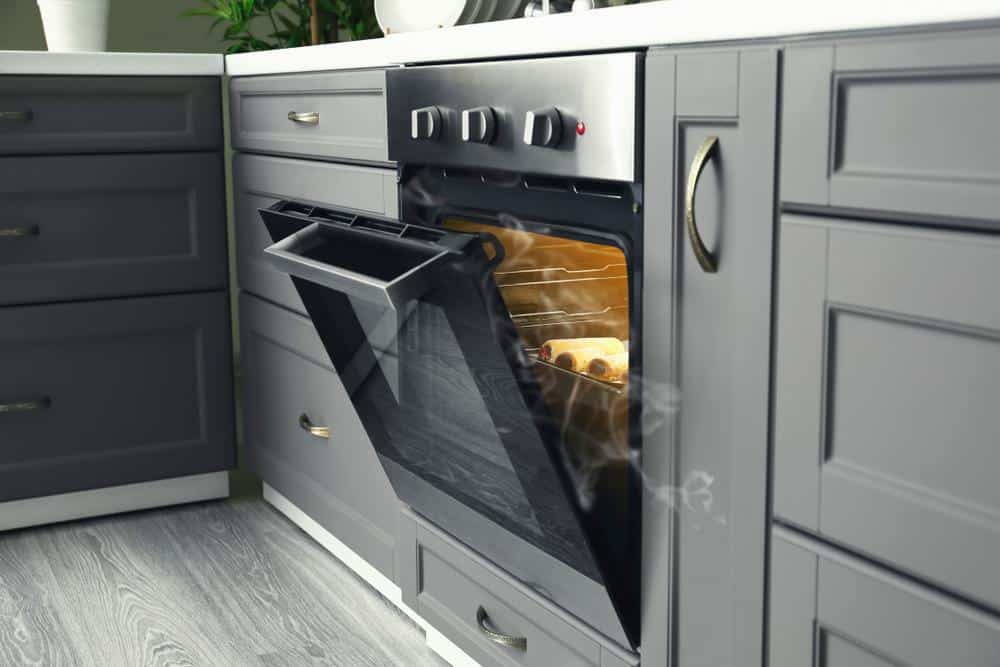
The heating element in a gas oven plays a critical role in the cooking process. It is the component responsible for igniting the gas and maintaining a consistent temperature for cooking. But where exactly is this heating element located, and how does it contribute to the overall efficiency of a gas oven? In this article, we will delve into the specifics to provide you with a comprehensive understanding of the heating element in a gas oven.
The heating element, or igniter, in a gas oven is typically located at the rear of the oven plate or beneath the oven floor. To access it, you may need to remove the bottom oven panel. In some models, the igniter and safety valve are located beneath the oven, at the back of the broiler compartment.
What is the Function of a Heating Element in a Gas Oven?
The heating element in a gas oven, also known as the oven igniter, is responsible for igniting the natural gas used to fuel the oven and maintain a consistent temperature for cooking. As the igniter heats up, it draws an increased current through the safety valve, causing the valve to open and release gas into the oven’s bake or broil burner tube. The igniter then ignites the gas into a flame to heat the oven.
The thermostat inside the oven measures and regulates the heat to ensure that the oven maintains a consistent temperature without getting too hot. Once the desired temperature is reached, the burner is extinguished, and the gas supply is cut off. When the temperature begins to drop, the oven will switch itself back on to maintain the set temperature.
Where is the Heating Element Located in a Gas Oven?
The heating element in a gas oven is typically located at the rear of the oven plate or beneath the oven floor. To access the igniter, you may need to remove the bottom oven panel. The igniter is a one- to two-inch metal module covered with a metal cage. In some models, the gas oven igniter or pilot and safety valve are located beneath the oven, at the back of the broiler compartment.
How is the Heating Element in a Gas Oven Different from an Electric Oven?
The heating element in a gas oven is different from an electric oven in terms of the heat source and the way they generate heat. In a gas oven, the heat is generated by burning natural gas or propane, while in an electric oven, the heat is generated by an electric heating element.
An electric oven uses a heating element, which is a metal coil that heats up when an electric current passes through it. There are typically two heating elements in an electric oven: a lower bake element and an upper broil element. Some electric ovens also have a third convection element located behind the oven cavity rear panel. When the oven is turned on, the heating elements get hot and radiate heat, which is then distributed throughout the oven cavity.
On the other hand, a gas oven uses a gas flame ignited by an igniter, while an electric oven uses electric heating elements to produce heat. A gas oven uses a gas flame ignited by an igniter.
How Can You Safely Access the Heating Element in a Gas Oven?
To safely access the heating element in a gas oven, you should follow these steps:
- Turn off the gas supply.
- Unplug the oven.
- Open the oven door.
- Remove the oven racks.
- Access the igniter and heating element.
- Inspect the heating element.
Remember to exercise caution when working with gas appliances, and if you are unsure about any step or encounter difficulties, it’s best to consult a professional technician for assistance.
What Signs Indicate That the Heating Element in a Gas Oven Needs to Be Replaced?
Several signs indicate the heating element in your gas oven needs to be replaced:
- Takes too long to heat up.
- Never reaches bake temperature.
- Cooks unevenly.
- Stove burners light, but oven won’t heat up.
- Visible damage.
- Food remains uncooked or partially uncooked.
- Discoloration on the igniter.
If you notice any of these signs, it’s likely that the heating element in your gas oven needs to be replaced.
What are the Steps Involved in Replacing the Heating Element in a Gas Oven?
Replacing the heating element in a gas oven typically involves replacing the oven igniter. Here are the steps to replace the oven igniter in a gas oven:
- Disconnect the power and gas.
- Remove the oven racks.
- Access the igniter.
- Remove the old igniter.
- Install the new igniter.
- Reassemble the oven.
- Test the oven.
Remember to exercise caution when working with gas appliances and, if you are unsure about any step in the process, consider calling a professional technician for assistance.
How Does the Heating Element Contribute to the Overall Efficiency of a Gas Oven?
The heating element in a gas oven contributes to its overall efficiency by igniting the gas to create a flame that heats the oven and by regulating the temperature through the thermostat. However, gas ovens have lower cooking efficiencies compared to electric ovens due to the need for more airflow and the lower heat transfer efficiency.
What Precautions Should Be Taken While Handling the Heating Element in a Gas Oven?
When handling the heating element in a gas oven, you should take the following precautions:
- Turn off the oven and ensure it is cool before handling the heating element.
- Be cautious of hot surfaces when loading and unloading items.
- Do not use the oven to dry volatile samples.
- Rinse glassware that has been rinsed with an organic solvent again with distilled water before drying it in the oven.
- Do not use the oven for human food preparation.
- Be aware of the materials you are using and ensure they are safe to use at high temperatures.
- Do not overload the oven or exceed recommended operating temperatures.
- Make sure the oven is properly maintained and serviced by a trained and licensed professional at least once every two years.
- Install carbon monoxide detectors in your home, especially if you have gas appliances, to detect any potential gas leaks.
By understanding the location, function, and maintenance of the heating element in a gas oven, you can ensure optimal cooking results and prolong the lifespan of your appliance. With this knowledge, you can confidently navigate any issues that may arise and keep your oven running smoothly.
Frequently Asked Questions
How long does a heating element in a gas oven typically last?
The lifespan of a heating element in a gas oven, the igniter, can vary depending on usage and maintenance, but it typically lasts between 3 to 5 years.
What is the average cost of replacing a heating element in a gas oven?
The cost of replacing a heating element in a gas oven can vary, but it typically ranges from $150 to $250, including the service fee for a professional technician. This price can increase or decrease based on the specific model of your oven and the cost of the replacement part.
Can I use my gas oven if the heating element is faulty?
It’s not recommended to use your gas oven if the heating element is faulty. This could lead to uneven cooking or potentially dangerous situations. If you suspect your heating element is faulty, you should consult a professional technician.
Is it safe to replace the heating element in a gas oven by myself?
While it’s possible to replace the heating element in a gas oven by yourself, it’s recommended to hire a professional technician, especially if you’re not comfortable working with gas appliances. This ensures your safety and the proper functioning of the oven.
Can a faulty heating element in a gas oven cause a fire?
While it’s unlikely, a faulty heating element in a gas oven can potentially cause a fire. If the igniter doesn’t properly control the flow of gas, it could lead to a gas leak, which could ignite and cause a fire. Always consult a professional if you suspect a problem with your oven’s heating element.












